Over that past two months, we have discussed various methods for evaluating the right heart. Guided from the updated ASE chamber quantification guidelines, we have been able to elaborate on quantifying methods for:
Back in January of this year, we discussed the proper methods for estimating the right atrial pressure (RAP) via echo (which you can find here). This blog covered how to use the collapsibility index to determining the RAP value. If you need a refresher on how to correctly measure the IVC and evaluate collapsibility of the IVC with sniff please review 8 Things to know about estimation of RAP.
This week, we are going to combine the information we have covered on right heart quantification along with the material covered in our RAP blog and review best techniques for acquiring the RVSP (Right Ventricular Systolic Pressure)!
Right ventricle systolic pressure (RVSP) is a measurement commonly found on an echocardiogram that provides us a value estimating the pressure within the pulmonary artery (PA). Pulmonary artery pressures (PAP) are best obtained via cardiac catheterization. Echo allows us to obtain a non-invasive value via RVSP measurement, which tells us the pressure generated by the right side of the heart. RVSP can serve as a guide to help determine the presence of pulmonary hypertension (PHTN) within a patient.
We are able to use the Bernoulli equation to determine the RVSP.

There are 2 components that contribute to determining the RVSP:
Within our routine scanning protocol, we Doppler the tricuspid valve in order to obtain the peak regurgitant velocity. Since velocity measurements are angle dependent, it is crucial we Doppler the TR gradient in multiple windows. We take the peak velocity obtained and report the value in ‘m/s’.

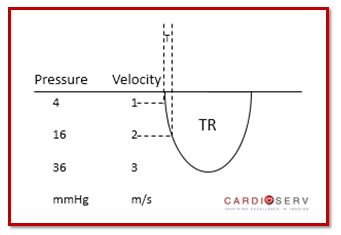
Assessing RAP via Collapsibility Index |
|
Measure IVC Diameter |
Assess IVC Collapsibility with sniff |
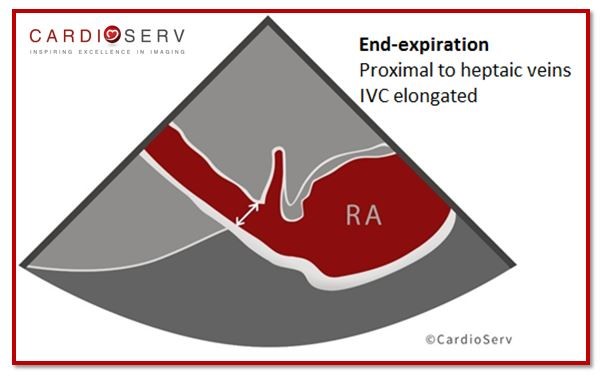 |
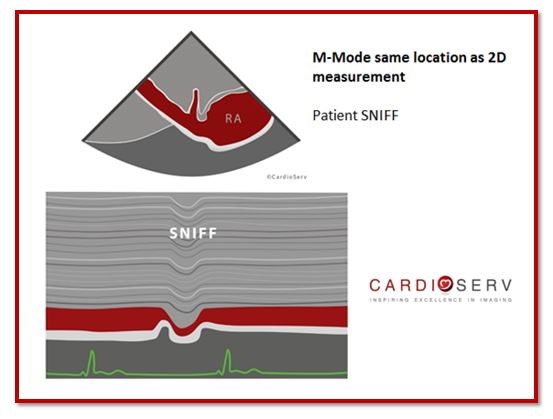 |
Abnormal > 2.1cm |
Abnormal < 50% collapse |
Read the full article on Collapsibility Index: 8 Things to know about estimation of RAP.
Once we’ve obtained the IVC diameter and determined collapsibility, we use these variables to estimate our the RAP. ASE released the updated recommended methods for determining the RAP value in the 2015 Chamber Quantification Updates. They suggest moving from a range based RAP to a specific value to help bring simplicity and uniformity to labs!
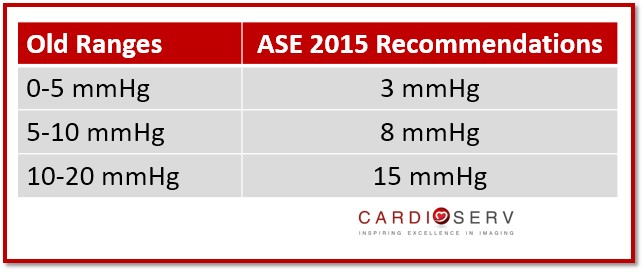
The ASE did a wonderful job with helping us learn how to quickly estimate the RAP value based upon the IVC diameter and collapsibility:
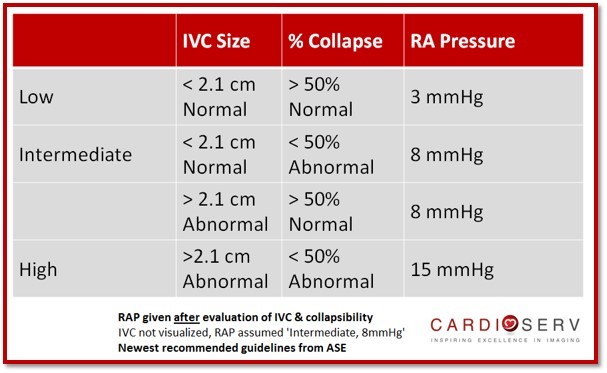
Easiest way to remember the specific RAP value is to understand the normal and high pressure, everything else will fall in the middle category!
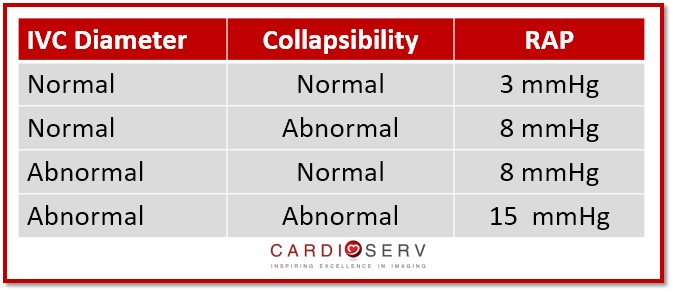
Once we’ve determined the RAP, we are able to then add the TR peak gradient to the RAP to determine the RVSP!
Best practice would be to use the collapsibility index every time when calculating the RAP and be sure to assign the value of 3 in the presence of normal RAP.
The gold standard for grading pulmonary hypertension (PHTN) is with the Mean Pulmonary Pressure Gradient obtained via cardiac catheterization. With echocardiography the industry standard is to obtain the RVSP and use these values to evaluate for pulmonary hypertension.
According to the 2010 ASE Guidelines for Echocardiographic Assessment of the Right Heart in Adults, they explain a basic concept:
It is recommended that your laboratory creates a reference value table that is suitable for physicians, staff and patients.
We hope you will take this information and implement this into your routine scanning protocol. With the ASE being the leaders in our industry, it’s vital we continue to learn as they provide educational information to us and improve our scanning skills so that we can give our patients the best care possible.
 Andrea Fields MHA, RDCS, Cardiac Clinical Director
Andrea Fields MHA, RDCS, Cardiac Clinical Director
Lang, R. M., MD, Badano, L. P., MD, & Mor-Avi, V., PhD. (2015). Recommendations for Cardiac Chamber Quantification by Echocardiography in Adults: An Update from the American Society of Echocardiography and the European Association of Cardiovascular Imaging. JASE, 28(1), 1-53. Retrieved March 1, 2017, from http://asecho.org/wordpress/wp-content/uploads/2015/01/ChamberQuantification2015.pdf
Rudski, L. G., MD, & Lai, W. W., MD. (july 2010). Guidelines for Echocardiographic Assessment of the Right Heart in Adults: A Report from the American Society of Echocardiography. JASE,23(7), 1-29. Retrieved April 11, 2017, from http://www.onlinejase.com/article/S0894-7317(10)00434-7/pdf




May
2017
May
2017
Jun
2017
Jun
2017
Jun
2017